Contemporary Istanbul 2025 Highlights
This year’s landmark 20th-anniversary edition of Contemporary Istanbul (September 23–28, 2025), held within the atmospheric shipyard complex of Tersane, was marked by a sustained institutional confidence and the lively cross-pollinations of an increasingly globalised market. Artvisor was proud to play an active role in this edition: our team delivered a bespoke advisory and tours programme for collectors; our founder, Piero Tomassoni, moderated a high-profile panel within the Contemporary Istanbul Foundation Dialogues; and Artvisor co-hosted an exclusive dinner with The Art Newspaper at the Mandarin Oriental Bosphorus.
 .
. 
Coinciding with the Istanbul Biennial, the fair attracted an even larger and more enthusiastic assembly of collectors and museum delegations than the year before. Across the halls, the quality of works on display felt notably elevated. Artworks by renowned Turkish figures such as Nil Yalter, and Azade Köker were shown in presentations that spoke to fully mature practices and an unmistakable international resonance.
Marking two decades of the fair, the curatorial ‘Focus: America’ turned its gaze deliberately to New York. The organisers set up a small but eloquent dialogue between histories and geographies: Barry X Ball’s 2024 sculpture Envy was shown alongside John Chamberlain’s 1980 work and a monumental 1994 canvas by James Rosenquist (the latter previously exhibited at the Guggenheim and loaned by Sevil Dolmaci). Placed in proximity, these objects produced an instructive friction, threads of materiality, scale and the rhetoric of spectacle that trace how New York’s experimental energies radiate into Europe and the Middle East.
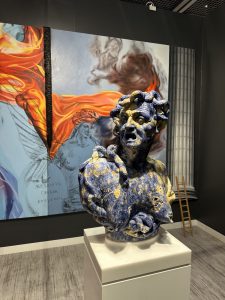
Heft Gallery’s presentation offered another kind of transnational encounter: a cross-border collaboration between the photographer Edward Burtynsky and the Turkish AI practitioner Alkan Avcıoğlu. Machine-assisted imagery paired with Burtynsky’s long-standing ecological concerns to produce images that felt at once documentary and speculative, an apt reflection of the fair’s engagement with present-day anxieties. Complementing this, Borusan Contemporary presented Edward Burtynsky: Shifting Topography – Burtynsky’s first major solo exhibition in Turkey – bringing photographs from Turkey and beyond into a single, rigorous frame that investigated human industry’s imprint on nature.
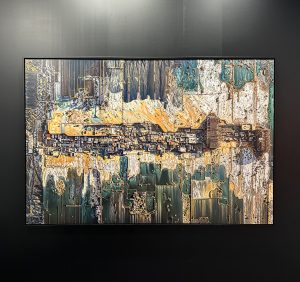
One of the fair’s politically attentive counterpoints was Sarp Kerem Yavuz’s lego constructions: large-scale renditions of Ottoman patterns assembled from thousands of bricks, inviting tactile engagement. In the same breath, the festival’s Dialogues programme, themed “Disrupted Coordinates: Istanbul and the Shifting Landscape of Art,” interrogated the conditions of publicness and resilience in an unstable world. The opening panel on Public Art – moderated by Piero Tomassoni – considered how architecture, public art, and cultural programming can redefine urban space to foster belonging, participation, and new forms of civic engagement. Speakers included Jean Cooney (Director, Times Square Arts), Mehmet Kalyoncu (Founder, Türkiye Design Council), Sarp Kerem Yavuz (Artist & Creative Director of Contemporary Istanbul Foundation).

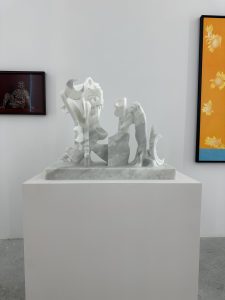
Sculpture and monumentality were well represented. Kevin Francis Gray introduced three new works across the Tersane complex. Two marble sculptures were exhibited alongside a ceramic-head from his ongoing ‘Fragile Head’ series, offering a tension between classical heft and a contemporary sensibility of fragment and face. Nearby, Arcangelo Sassolino’s installation The State of Desire, staged at Beymen Tersane G8 in collaboration with Galleria Continua, remains on view through December 14. First shown in 2009 at Z33, the piece, the mechanical metronome measuring 18 metres and weighing 2.4 tonnes works as a machine and an allegory: physics and desire collide to produce a spectacular meditation on duration, force and human affect.
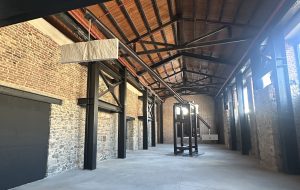
European gallery participation felt stronger this year. Buchmann Galerie’s booth offered a compact syllabus of modern sculptural and painterly concerns. Works by Tony Cragg, Pedro Cabrita Reis and Bettina Pousttchi revealed formal oppositions between gravitas and weightlessness through material choices and spatial choreography. Notably, Pousttchi’s work, recently commissioned by the Istanbul Modern, signalled the reciprocal exchange between local institutions and European practice. First-time exhibitor Amanita introduced delicate but resolute paintings by Alessandro Twombly and Bill Jensen, exploring fresh perspectives to radical gesture in painting.
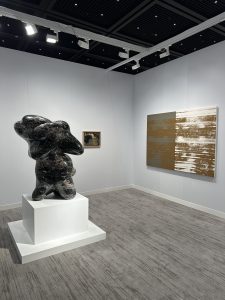
Across the Tersane one encountered daring material experiments, rigorous photographic projects, and socially attuned practices that negotiated history, ecology and public life. In this context Artvisor’s advisory and programmes aimed to foreground those conversations between artists, curators and collectors, helping translate what was visible on the floor into lasting commitments.

